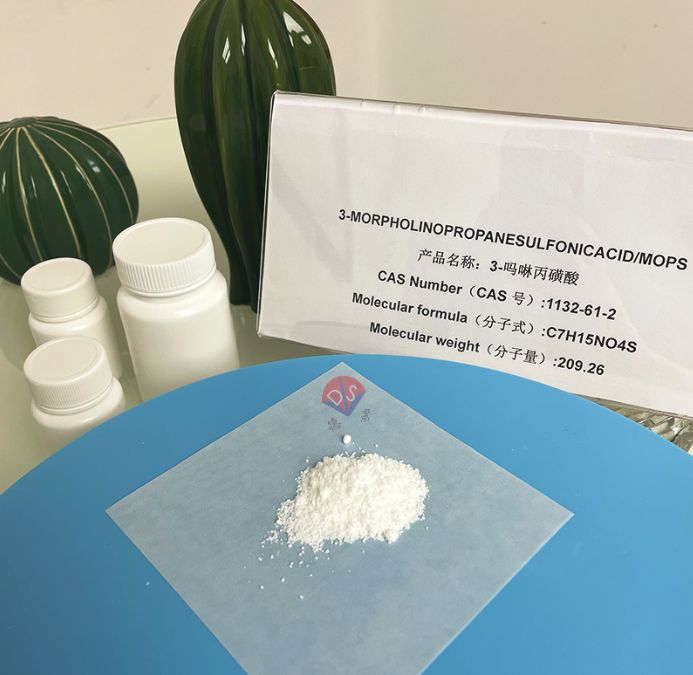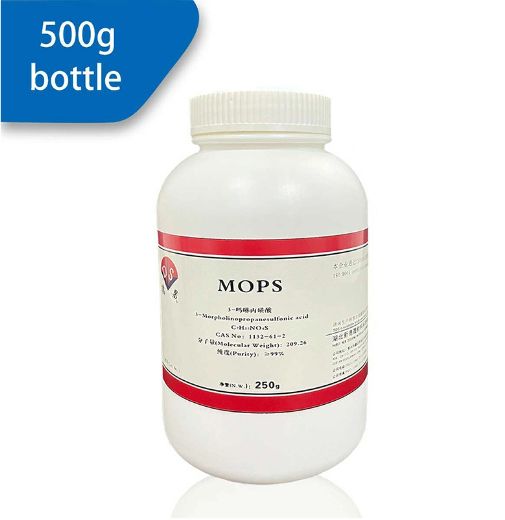Exploring the Metal Complexation Characteristics of Biological Buffers: Importance for Life Science and Enzymology Research
Release time:
2025-07-14
In life science research, biological buffers are crucial as they provide the necessary pH environment for various biochemical reactions. However, when the research object involves biological systems containing metal ions, the interaction between buffering agents and metal ions, namely the chelating properties, becomes a key factor affecting the experimental results. The in-depth study of the metal complexation characteristics of biological buffers is of great importance for multiple fields of life science research, especially in enzymatic research.

MOPS buffer
1、 Metal ions: key participants in life activities
Metal ions are widely present in living organisms and participate in regulating numerous life processes. For example, iron ions are the core component of hemoglobin, responsible for oxygen transport; Calcium ions play a crucial role in nerve signal transduction and muscle contraction; Potassium and sodium ions maintain the osmotic balance inside and outside the cell. In the field of enzymology, metal ions are a necessary condition for many enzymes to exhibit catalytic activity. They can act as cofactors for enzymes, directly participating in catalytic reactions, or indirectly affecting enzyme activity by stabilizing enzyme conformation.
2、 The subtle balance between pH value and metal ion concentration
In biological systems containing metal ions, the metal complexation properties of buffer solutions can affect the pH value of the solution. When the buffer solution forms a complex with metal ions, protons are often released, leading to a decrease in the pH value of the solution. This change in pH value may affect the bioavailability of metal ions, thereby affecting the structure and function of biomolecules. Therefore, when studying biological systems containing metal ions, it is necessary to fully consider the metal complexation characteristics of buffer solutions to maintain stable metal ion concentrations and constant pH values.
3、 Key considerations in enzymatic research
This issue is particularly prominent in enzyme detection, as many enzymes require metal ions to maintain their activity. For example, some metalloenzymes contain metal ions in their active centers, which directly participate in catalytic reactions; Other enzymes require metal ions to stabilize their spatial structure and ensure their catalytic activity. The metal chelation properties of buffer solutions can affect the bioavailability of metal ions, thereby affecting enzyme activity. Therefore, in enzymatic research, selecting appropriate buffer solutions is crucial.
4、 Buffer selection: consideration of metal binding constant
Some biological buffers, such as HEPES, MOPS, and PIPES, have extremely low metal binding constants and are ideal choices for studying metal dependent enzymes; However, other buffer solutions have lower applicability due to their higher metal binding constants. In order to better understand the metal complexation characteristics of buffer solutions, we need to conduct in-depth research on the interaction mechanism between buffer solutions and metal ions. This includes studying the effects of factors such as the chemical structure of the buffer solution, the type and concentration of metal ions, the pH value and ionic strength of the solution on the formation of complexes. Through these studies, we can establish a predictive model for the metal complexation characteristics of buffer solutions, providing guidance for experimental design.

Product packaging
Desheng New Materials, as an enterprise dedicated to the research and production of biological buffering agents,. Our biological buffer products undergo strict quality control to ensure consistency and stability between batches, providing reliable assurance for your experimental data. Choose Desheng, choose Anxin, let's work together to explore the metal complexation properties of biological buffers and contribute our strength to life science research!
Previous page
Previous page
News
Contact details
Contact number
Address: C8, Guanggu United Science and Technology City, Ezhou City, Hubei Province
Fax:0711-3704 589
Follow us



